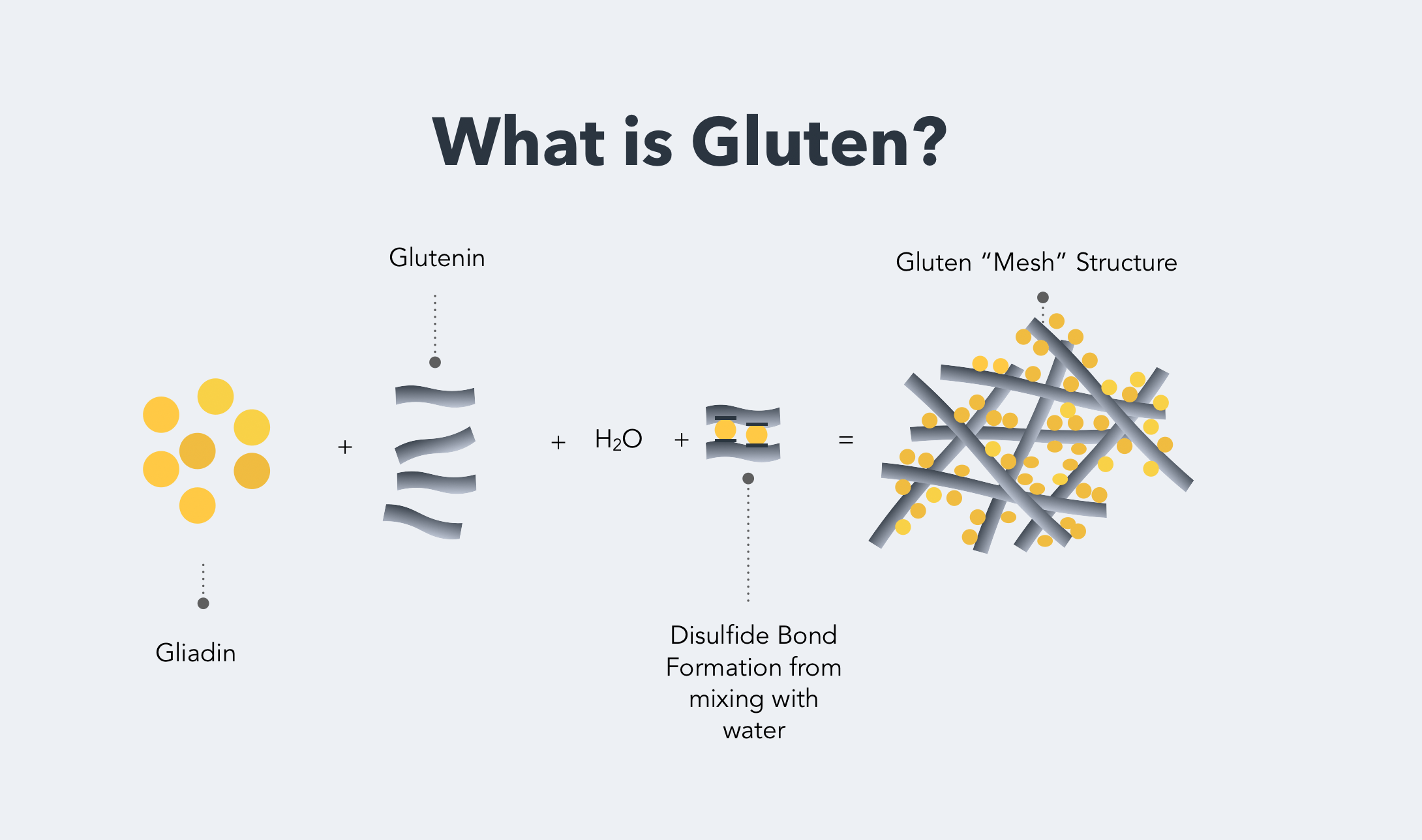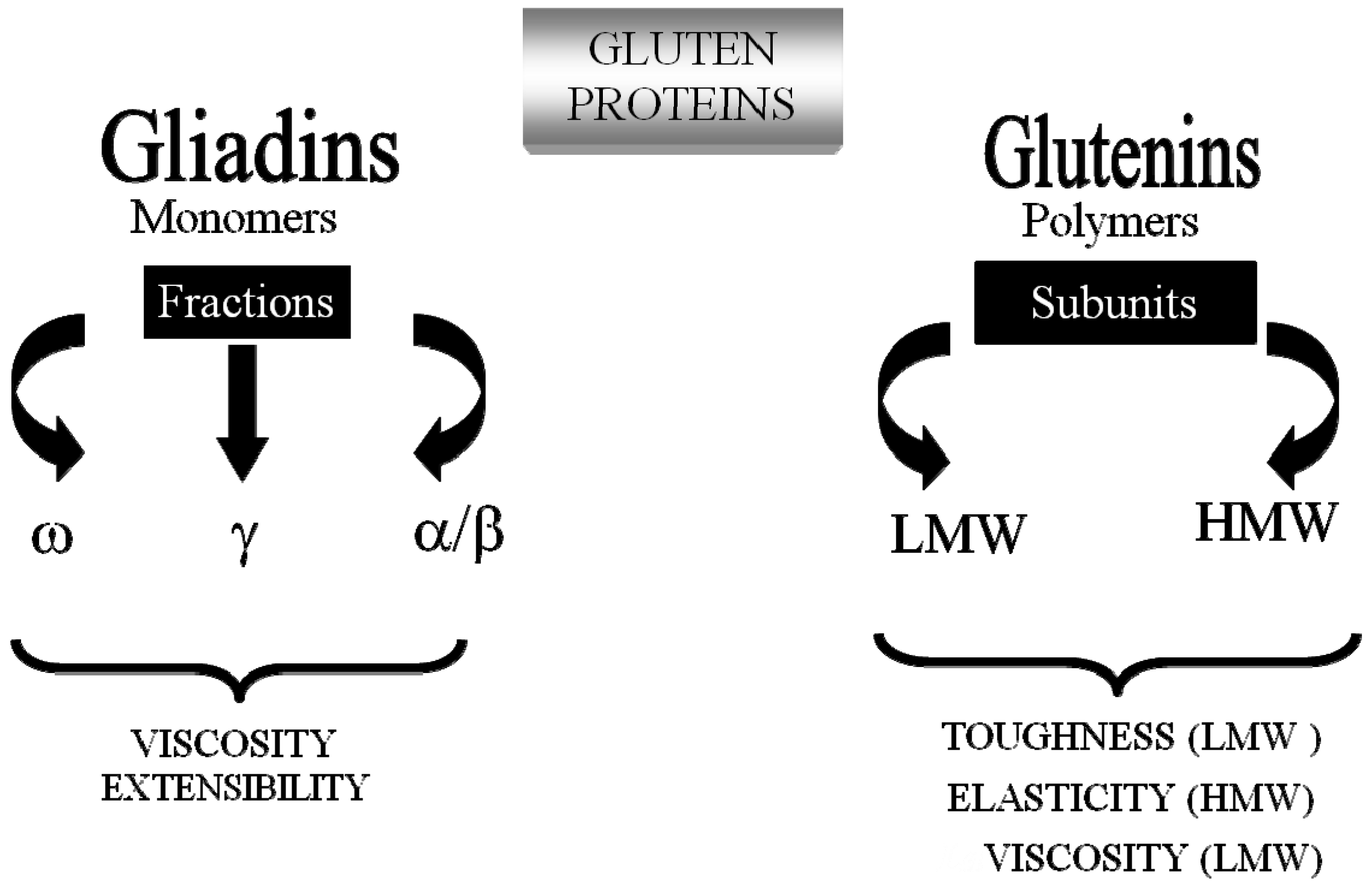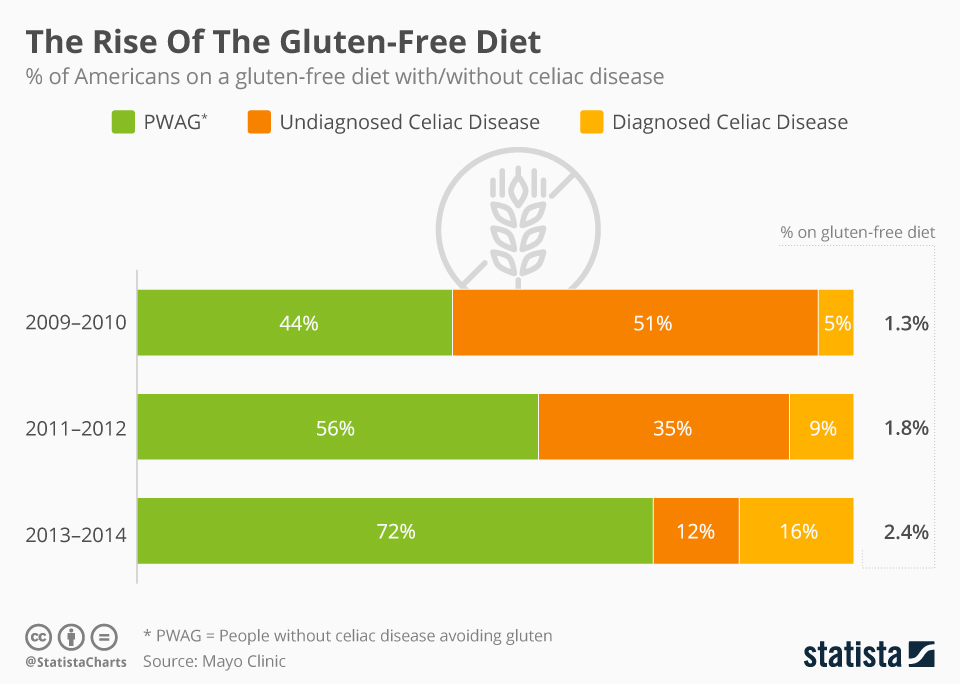Gluten is defined as an insoluble protein complex formed by mechanical manipulation of wheat proteins in the presence of water.
Glutenin on the other hand, is a specific protein that is a major component of gluten. It is responsible for the elasticity and strength of the dough.

Information
Formation
Gluten is formed when two types of proteins found in wheat flour, glutenin and gliadin, are mixed with water. The mechanical action of kneading the dough causes these proteins to interact and form a network that gives dough its characteristic elasticity and chewiness.
Properties
Gluten is not water-soluble, which means it does not dissolve in water. Instead, it forms a viscoelastic network that can trap air bubbles, making it essential for the texture of baked goods.
It is:
- viscous: can be deformed without breaking; able to flow
- elastic: resists being stretched or deformed; returns to its original shape after being stretched
Observations
- From above: gluten is both viscous and elastic
This is because the Glutenin proteins form long, coiled structures that can stretch and then return to their original shape, while the Gliadin proteins provide the dough with its ability to flow and deform.

-
Viscous-elastic properties of gluten are important for desired qualities of certain foods (e.g. bread )
-
Doughts made with flours that lack gluten proteins don’t have viscous-elastic properties
Pizza Dough
Question: How Can the Properties of Gluten-free Products Be Improved?

